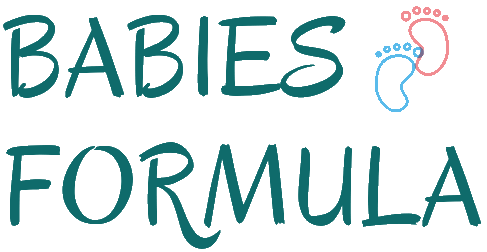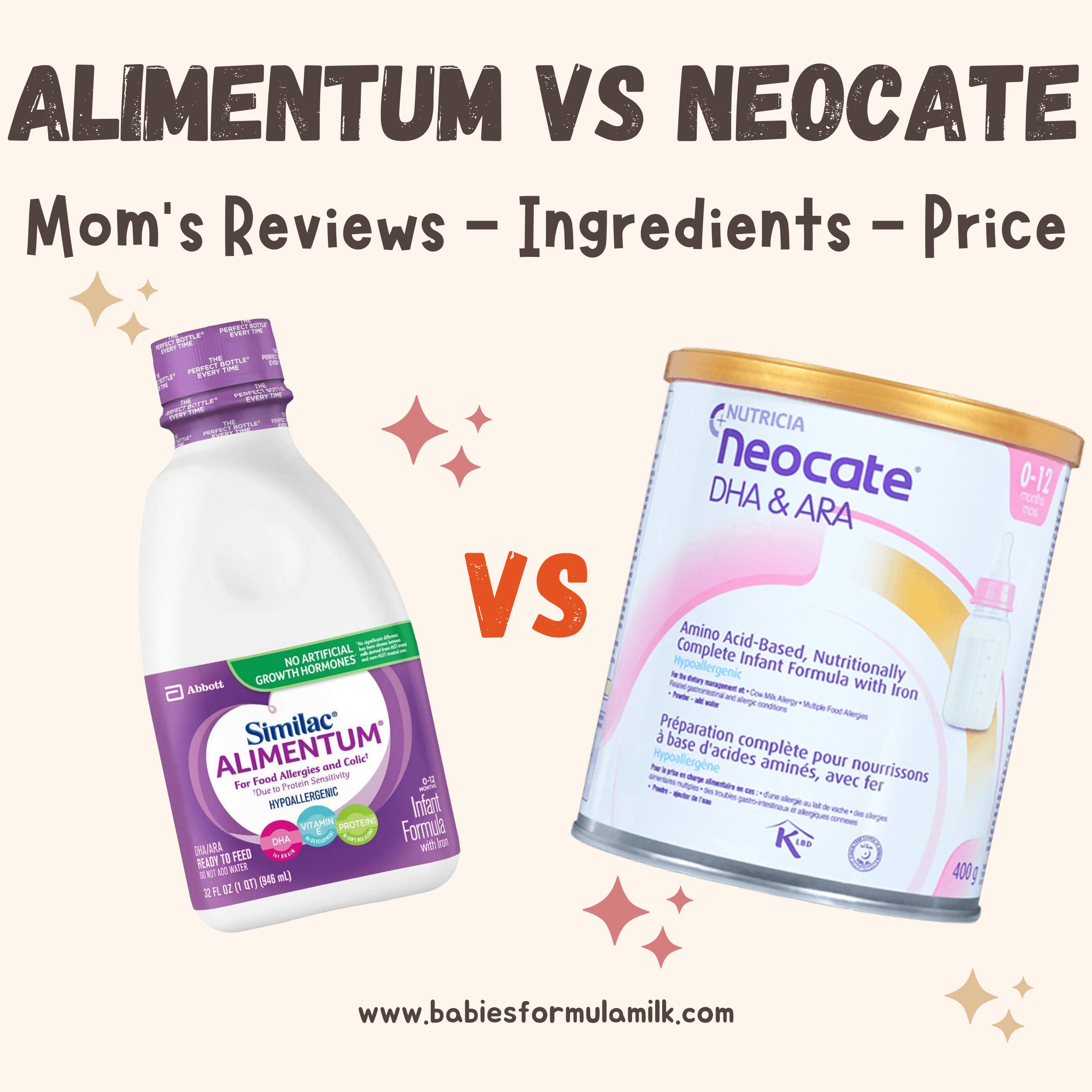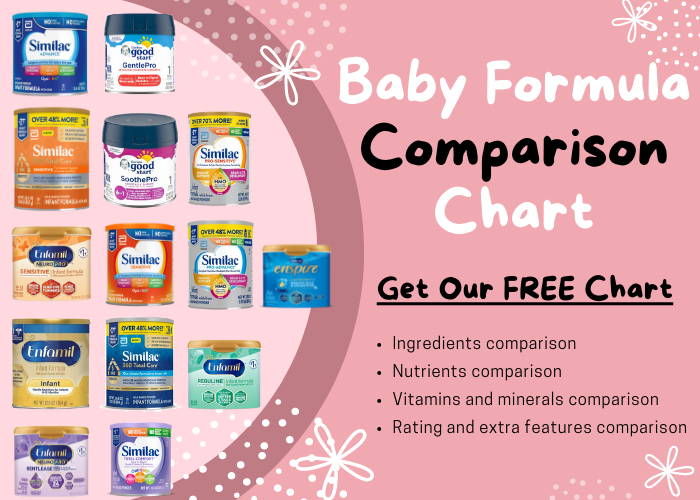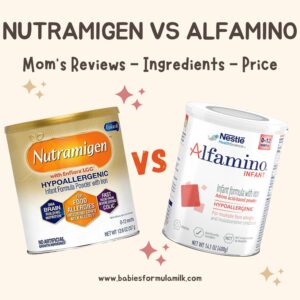Key Differences?

The Best One?
The “best” formula between Alimentum and Neocate depends on your baby’s individual needs and any specific health concerns they may have.
Alimentum ready-to-feed is an extensively hydrolyzed formula made for mild to moderate allergies like gas, spit-up, colic, and fussiness which means is the first choice to try in case your baby has a cow’s milk or lactose allergy since it is cheaper compared to Neocate.
On the other hand, Neocate is an amino acid formula made for babies with severe allergies and who show bad reactions to extensively hydrolyzed formulas, Neocate shows good results in managing issues such as reflux, eczema, tummy problems, and even blood in stools which mean it’s the last choice to look after because it’s super expensive.
Mom’s Reviews Comparison:
Alimentum Ready-to-Feed is an extensively hydrolyzed casein protein and is lactose-free, suitable for mild to moderate cow’s milk allergies. Neocate, on the other hand, is amino acid-based, designed for severe allergies to cow’s milk and soy formulas, multiple food protein intolerances, and gastrointestinal disorders like eosinophilic esophagitis.

Alimentum RTF has garnered positive reviews from moms who appreciate its effectiveness in addressing common infant issues such as gas, spit-up, colic, and fussiness. These moms have found relief for their babies using Alimentum RTF. Another aspect praised by mothers is the formula’s user-friendly nature. Alimentum RTF comes pre-prepared and ready-to-feed, making it easy and convenient for parents to use, especially during busy times or while on the go.
However, there are some negative aspects associated with Alimentum RTF, based on mom’s reviews. One common concern is its cost, as some parents find it expensive. Despite being more affordable than Neocate, the price can still be a strain on certain families’ budgets. Additionally, the formula’s thick consistency and pre-prepared nature may not suit all parents. They find it difficult to control the consistency or adjust it according to their baby’s preferences.
Moreover, some babies may not enjoy the taste of Alimentum RTF, making feeding a challenge for these moms. Additionally, a few infants may experience constipation while on Alimentum RTF, leading to discomfort and concern.
On the other hand, Neocate has received positive reviews from moms who found it beneficial for addressing specific health concerns in their babies. These moms have reported that Neocate is effective in managing issues such as reflux, eczema, tummy problems, and even blood in stools, indicating its suitability for infants with unique medical needs.
Another positive aspect of Neocate is its ease of use. Moms find it easy to mix and quick to digest, making it hassle-free and time-saving for parents, particularly when dealing with infants with delicate health conditions.
Despite its positive attributes, Neocate also faces certain negative aspects based on Mom’s reviews. Like Alimentum RTF, Neocate is perceived as expensive, which can be a significant consideration for families on a tight budget. Moreover, the taste and smell of Neocate may not be appealing to some babies, resulting in potential feeding difficulties.
Some moms have noted that their infants experience hard stools while on Neocate, leading to discomfort and concern. Additionally, the formula can be challenging to find in physical stores, making it less convenient for some parents who prefer immediate access.
Related: Alimentum RTF Vs EleCare: Which one is The Best (With Charts)
Ingredients Comparison:
Protein Source:
The main difference between Alimentum RTF and Neocate lies in their protein sources.
- Alimentum RTF: The protein source in Alimentum RTF is extensively hydrolyzed casein. This means that the casein protein, which comes from cow’s milk, has been broken down into smaller peptides, making it easier for babies with cow’s milk allergies or sensitivities to tolerate. However, it is important to note that Alimentum RTF still contains cow’s milk protein, even if it is in a modified form.
- Neocate: In contrast, Neocate uses an entirely different protein source. It is formulated with amino acids, which are the building blocks of proteins. Neocate is considered an elemental formula, meaning that its protein is in the form of individual amino acids, and it does not contain any intact proteins from cow’s milk or other sources. This makes Neocate hypoallergenic and suitable for babies with severe allergies to cow’s milk and other common allergens.
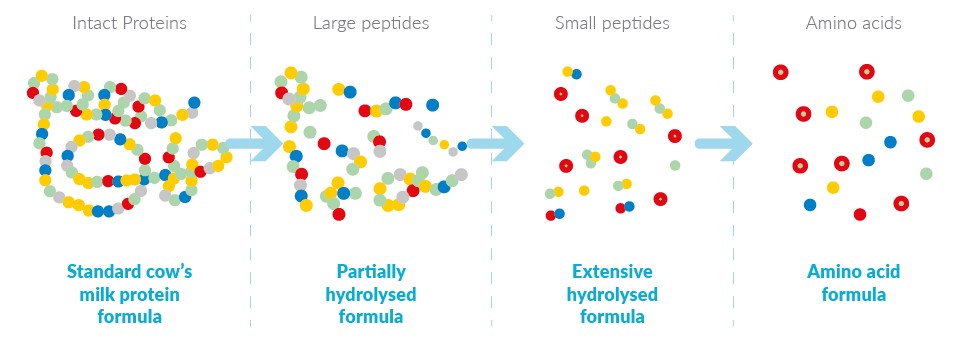
Carbohydrate Source:
The carbohydrate sources in Alimentum RTF and Neocate differ significantly:
- Alimentum RTF: The primary carbohydrate source in Alimentum RTF is corn syrup solids. Corn syrup solids are derived from corn starch and contain various sugars, including glucose and maltodextrin. These carbohydrates provide a source of energy for infants using Alimentum RTF.
- Neocate: In contrast, Neocate utilizes modified tapioca starch and sugar as its carbohydrate source. Modified tapioca starch is a highly processed starch derived from tapioca root, while sugar in this context likely refers to sucrose or table sugar. These carbohydrates also serve as a source of energy for babies who are fed Neocate.
Related: EleCare Vs Neocate: Full Comparison (With Charts)
Fat Source:
The fat sources in Alimentum RTF and Neocate vary as follows:
- Alimentum RTF: The fat in Alimentum RTF is derived from a combination of safflower oil, soy oil, and medium-chain triglycerides (MCT). Safflower oil and soy oil are vegetable oils rich in essential fatty acids, while MCTs are easily digestible fats that can be beneficial for infants with certain digestive issues.
- Neocate: Neocate, on the other hand, utilizes a different combination of fats. Its fat sources include high oleic sunflower oil, sunflower oil, medium-chain triglycerides (MCTs), and canola oil. High oleic sunflower oil and sunflower oil are also vegetable oils high in essential fatty acids, while MCTs and canola oil provide additional nutritional benefits.
Prebiotics:
2′-Fucosyllactose (2FL HMO) is a prebiotic that is found in the Alimentum RTF formula. HMO stands for Human Milk Oligosaccharides, and 2FL is one of the most abundant and well-researched HMOs found in human breast milk. Prebiotics are non-digestible components that promote the growth and activity of beneficial bacteria in the gut, contributing to a healthy gut microbiome.
In breast milk, 2FL HMO plays a crucial role in supporting the development of a baby’s immune system and overall health. It has been shown to have several benefits.
Whereas Neocate doesn’t have a prebiotic.
Related: Alimentum RTF Vs Puramino: Mom’s Reviews – Ingredients – Prices
Nutrition Comparison:
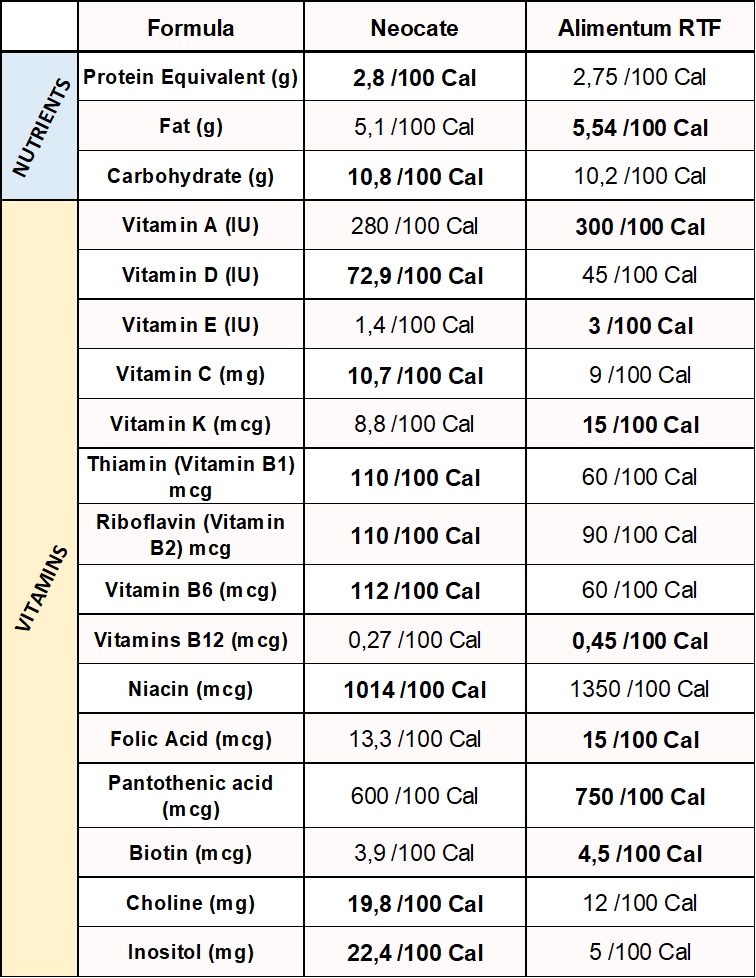
Nutrients:
In terms of nutrients, Neocate has more protein and carbohydrate than Alimentum whereas this last has more fat. However and despite this difference, both formulas provide the nutritional value the baby needs.
Vitamins:
Regarding vitamins, Neocate is fortified more with Vitamin D, Vitamin C, Vitamin B1, Vitamin B2, Vitamin B6, Niacin, Choline, and Inositol whereas Alimentum RTF has more Vitamin A, Vitamin E, Vitamin K, Vitamin B12, Folic Acid, Pantothenic Acid, and Biotin than Neocate.
Inositol serves as an important component in supporting the growth and development of infants. It is involved in cellular signaling, cell membrane structure, and nerve function. Additionally, inositol is thought to play a role in lipid metabolism and insulin signaling. Including inositol at a high level in Neocate helps ensure that infants receive this vital nutrient, especially if they are unable to consume breast milk, which is a natural source of inositol.
Related: Alimentum RTF Vs Alfamino: Which One To Choose?
Minerals:
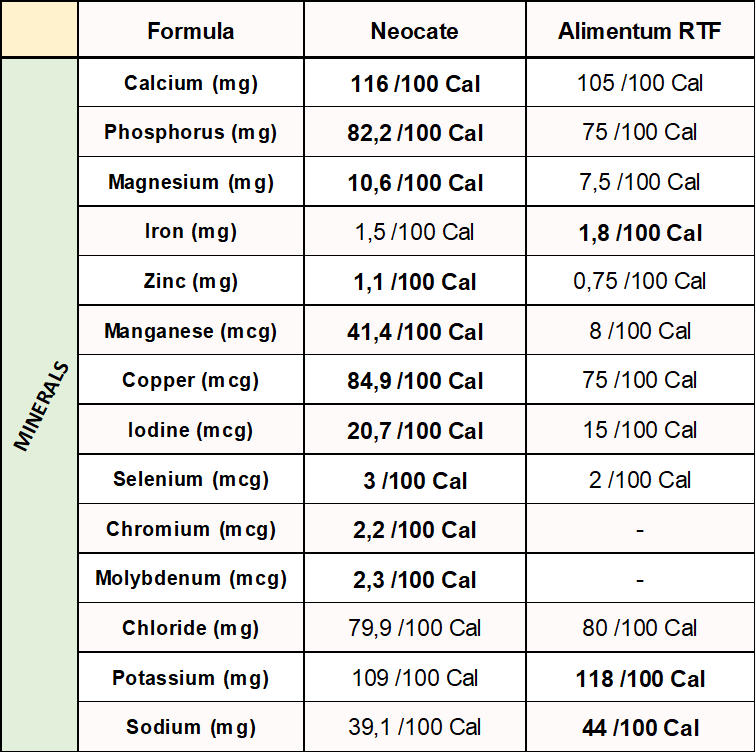
In terms of minerals, Neocate contains high levels of Calcium, Phosphorus, Magnesium, Zinc, Manganese, Copper, Iodine, Selenium, Chromium, and Molybdenum compared to Alimentum while this last has levels of Iron, Potassium, and Sodium.
Iron is an essential mineral found in baby formula and is a crucial nutrient for a baby’s growth and development. It plays a vital role in the production of hemoglobin, a protein in red blood cells that carries oxygen throughout the body. Iron is especially important for infants as it supports their rapidly growing brains and body tissues.
“Chromium is essential for maintaining normal glucose metabolism,” says pubmed.ncbi.nlm.nih.gov
“Molybdenum works in the body to break down proteins and other substances,” says WebMD
Price and Size Comparison:
| ALIMENTUM | NEOCATE |
|---|---|
| 34.84 $ 12.1 oz 2.88 /oz Buy HERE | 46 $ 14.1 oz 3.26 /oz Buy HERE |
| 12.79 $ 32 fl oz 40 ¢/fl oz Buy HERE at Walgreens 13.12 $ 32 fl oz 41 ¢/fl oz Buy HERE at Walmart | – |
Neocate is formulated with amino acids as its protein source, which are more expensive to produce than hydrolyzed casein used in Alimentum RTF. The process of creating amino acid-based formulas is more complex and requires specialized ingredients, contributing to its higher cost.
Furthermore, Alimentum RTF is a more widely available formula and is produced in larger quantities, allowing for economies of scale that can help reduce its cost. Neocate, being a specialized formula with a smaller target market, may not have the same production volume, leading to higher production costs.
One thing you can do if you are willing to use Neocate is you have your pediatrician sign a paper that your baby needs an elemental formula and send it to your insurance company. They cover all the expenses and deliver everything straight to your doorstep. This would save you thousands!
How to Switch From Alimentum to Neocate?
Switching from Alimentum to Neocate requires careful consideration and should be done under the guidance of a healthcare professional, such as a pediatrician or a registered dietitian. Here are some general steps to help you with the transition:
- Consult with a Healthcare Professional: Before making any changes to your baby’s formula, schedule an appointment with your baby’s healthcare provider. They will assess your baby’s specific needs and health condition to determine if Neocate is the right formula for your baby.
- Gradual Transition: Switching formulas abruptly can upset your baby’s digestive system. To minimize discomfort, gradually introduce Neocate while slowly decreasing Alimentum over several days. Start by mixing a small amount of Neocate with the Alimentum your baby is currently taking and gradually increase the ratio of Neocate over time.
- Observe for Reactions: During the transition, closely observe your baby for any signs of adverse reactions or allergies to the new formula. Common symptoms to watch for include excessive fussiness, diarrhea, constipation, rashes, or changes in sleep patterns. If you see any worrying signs, get in touch with your doctor right away.
- Adjusting Serving Size: The serving size of Neocate may differ from Alimentum, so follow the guidance of your healthcare provider to determine the appropriate amount to feed your baby.
- Stay Hydrated: Ensure your baby stays well-hydrated during the transition. Offer frequent feeds and keep an eye on their urine output to ensure they are getting enough fluids.
- Be Patient: Every baby is different, and some may take longer to adjust to the new formula. Be patient throughout the transition process and provide comfort and support to your baby.
- Seek Support: If you have any questions or concerns during the switch, don’t hesitate to reach out to your healthcare provider or a lactation consultant for additional guidance and support.
Related: The Best Generic Alimentum Formula (Tested by Moms)
